by Michelle Hand for TWU Course Literature for Children and Young Adults Stead, Rebecca. 2010. WHEN YOU REACH ME New York, NY: Wendy Lamb Books (Random House). ISBN: 9780385737425.
WHEN YOU REACH ME is a young adult novel loosely based on A WRINKLE IN TIME. The main character, Miranda, is struggling with the usual teenage angst of friends, boys, school and family but Stead throws a "wrinkle" in the mix and the results are mind boggling.
Critical Analysis
Miranda is a typical 12 year old who lives in New York City in 1978. She is the daughter of a single mother and she basically has free reign over her neighborhood to roam and explore with her friends, Sal, Annemarie, Colin, Marcus and Julia. Stead hits the nail on the head with the descriptions of her friends, family members and surrounding environment. She made me feel as though I was watching "Welcome Back Cotter" or a movie from my childhood. What book set in New York City wouldn't be complete without a character who is homeless? Who is this homelesss man they call "The Laughing Man?" Is he really as crazy as he seems?
Stead does a great job telling a story in short bursts of information with her sentence structure and chapter lengths. She keeps the plot moving along with great narrative and the reader will be going back to the beginning to see what was missed that were clues all along the way.
I thoroughly enjoyed this novel and Stead's style of writing is simple yet so intriguing, I couldn't put it down. The characters are relatable and multi-faceted. Stead pulls the reader into the plot with simple dialogue and humor but in the end, the reader discovers the plot is quite complicated. If time travel and temporal mechanics is something a reader can't quite wrap his or her brain around, then WHEN YOU REACH ME is just the book to turn the light bulb on.
Review Excerpt(s)
"This unusual, thought-provoking mystery will appeal to several types of readers."–Caitlin Augusta, The Darien Library, CT - School Library Journal
"[W]hen all the sidewalk characters from Miranda's Manhattan world converge amid mind-blowing revelations and cunning details, teen readers will circle back to the beginning and say,'Wow ... cool.'" - Kirkus Reviews
"Closing revelations are startling and satisfying but quietly made, their reverberations giving plenty of impetus for the reader to go back to the beginning and catch what was missed." - The Horn Book Magazine
2010 Newbery Medal
Connections
When did you realize that is Miranda, as she narrates this story, isn't talking to us, the readers? Were you able to figure out whom she was addressing before the end?
Talk about the way in which the author makes New York City feel like a neighborhood in a small town. How are/were Miranda's day-to-day experiences living in the city different from your own...leaving school for lunch, for instance?
Were you confused by the way the book skips back and forth between past tense and present tense? Do the different time frames ultimately make sense?
How are the chapter titles related to the $20,000 Pyramid game show...and how do those titles fit into the plot?
Talk about how friendships form and fall apart in this book— Sal who stops speaking to Miranda, Annemarie, Colin and Julia. How does the author interject racism into the story and how does it affect the friendships?
Talk about they way in which all the clues come together like a puzzle at the end. Does it all make sense?
Connections from “Lit Lovers: A Well Read Community”, accessed April 27, 2013, http://www.litlovers.com/reading-guides/15-young-adult-fiction/1136-when-you-reach-me-stead?.
Other fantasy/time travel fiction and/or written by Rebecca Stead for young adults.
L’Engle, Madeleine. 2007. A WRINKLE IN TIME. ISBN: 978-0312367541. (Reprint, Newbery Award Winner, 1963.)
Stead, Rebecca. LIAR & SPY. ISBN: 978-0385737432
Reiss, Katherine. PALE PHOENIX. ISBN: 9780152049270
by Michelle Hand for TWU Course Literature for Children and Young Adults Zusak, Markus. 2006. THE BOOK THIEF New York, NY: Knopf. ISBN: 9780385737425.
THE BOOK THIEF is a realistic fiction novel set during WWII revolving around an illiterate German girl who steals books, her adopted family and the trials that come with hiding a Jewish prisoner in the basement of the family's home.
Critical Analysis
Death narrates this realistic historical fiction with flowery language. At some points, I think Zusak confuses the reader with mixing up analogies of the human senses and distracts from the main plot of the story. Liesel Meminger, the main character, is most unfortunate. She loses her brother to Death and her mother abandons her. She finds solace in a stolen book she can't even read. Liesel experiences love and discipline by adoptive parents Hans and Rosa Hubermann. Hans teachers her how to read and shows her unconditional love. Rosa teaches her that life is not always rosy as Zusak describes in relating the events of Nazi Germany and Hitler's reign.
THE BOOK THIEF is definitely unforgettable from the believable and realistic characters to the heartbreaking setting. But most of all, the ongoing theme of hope through literacy will clinch the reader and never let go.
Review Excerpt(s)
"Death is not a sentimental storyteller, but he does attend to an array of satisfying details, giving Liesels story all the nuances of chance, folly, and fulfilled expectation that it deserves. An extraordinary narrative." –Francisca Goldsmith, Berkeley Public Library, CA - School Library Journal
"The Book Thief is unsettling and unsentimental, yet ultimately poetic. Its grimness and tragedy run through the reader's mind like a black-and-white movie, bereft of the colors of life. Zusak may not have lived under Nazi domination, but The Book Thief deserves a place on the same shelf with The Diary of a Young Girl by Anne Frank and Elie Wiesel's Night. It seems poised to become a classic."
- USA Today
"Zusak doesn’t sugarcoat anything, but he makes his ostensibly gloomy subject bearable the same way Kurt Vonnegut did in Slaughterhouse-Five: with grim, darkly consoling humor.”
- Time Magazine
Michael L. Printz Honor Book
Connections
What is ironic about Liesel’s obsession with stealing books? Discuss other uses of irony in the novel.
The Grave Digger’s Handbook is the first book Liesel steals. Why did she take the book? What is signifi cant about the titles of the books she steals? Discuss why she hides The Grave Digger’s Handbook under her mattress. Describe Hans Hubermann’s reaction when he discovers the book. What does the act of book thievery teach Liesel about life and death? Explain Rudy’s reaction when he discovers that Liesel is a book thief. How does stealing books from the mayor’s house lead to a friendship with the mayor’s wife? Explain how Liesel’s own attempt to write a book saves her life.
Liesel believes that Hans Hubermann’s eyes show kindness, and from the beginning she feels closer to him than to Rosa Hubermann. How does Hans gain Liesel’s love and trust? Decide whether Liesel is a substitute for Hans’s children, who have strayed from the family. Why is it so difficult for Rosa to demonstrate the same warmth toward Liesel? Discuss how Diesel’s relationship with Rosa changes by the end of the novel.
Abandonment is a central theme in the novel. The reader knows that Liesel feels abandoned by her mother and by the death of her brother. How does she equate love with abandonment? At what point does she understand why she was abandoned by her mother? Who else abandons Liesel in the novel? Decide whether she was abandoned by circumstance or by the heart.
Connections from “Lit Lovers: A Well Read Community”, accessed April 27, 2013, http://www.litlovers.com/reading-guides/13-fiction/144-book-thief-zusak?.
Other contemporary realistic fiction and/or by Markus Zusak for young adults.
Yolen, Jane. BRIAR ROSE. ISBN: 9780765342300
Zusak, Markus. I AM THE MESSENGER. ISBN: 9780375836671
Toksvig, Sandi. HITLER'S CANARY. ISBN: 9781596432475
by Michelle Hand for TWU Course Literature for Children and Young Adults Hale, Shannon and Dean. Illustrated by Nathan Hale. 2008. RAPUNZEL'S REVENGE. New York, NY: Bloomsbury. ISBN: 9781599900704.
RAPUNZEL'S REVENGE is a graphic novel with an Old West twist on the traditional fairy tale. Rapunzel is exiled to a tree tower by her "mother." While in the tower, her hair grows long enough to use as a means to escape. After she escapes she befriends Jack, an outlaw, who helps her find her way back to find her real mother and they get into some troubles along the way.
Critical Analysis
Since the style of writing is dialogue with illustrations, I muddled through this one. I am not a big fan of graphic novels and am also am not a big fan of female characters taking on the hero(ine) role. I think media, as well as books, have taken the female saving the day a little
too far. I think it is unrealistic for Rapunzel to know how to use her braids as a weapon without any practice. Jack, her friend, gets her into more trouble than helps. I know the setting is a fantastical one and I hope 5th graders who read it will realize the things Rapunzel does such as taking down a humongous water serpent or tying up several grown men at once would not actually happen in real life.
I do give credit to Hale for inserting some things that go wrong such as the adventure obtaining the thirty gold coins for returning the kidnapped girl. This adds a little reality to the storyline. The illustrations are vivid and bring the story to life. Hale mixes storybook characters such as Rapunzel and Jack, as in Jack and the Beanstalk. Jack is subtlety introduced and some readers may not pick up on it at first. Jack ends up using a bean and a golden
egg to help Rapunzel end the end to capture her evil "mother" so her real mother can be set free.
Review Excerpt(s)
"Rich with humor and excitement, this is an alternate version of a classic that will become a fast favorite of young readers." Grades 5-8. --Tina Coleman - Booklist.
"If you ever thought of graphic novels as providing an easy read, this one will confound your expectations. It offers 144 pages of rip-roaring storytelling in which the familiar fairy-tale is hugely extended, gathering in its sweep all kinds of echoes from Wild West and Super-hero films as well as other fairy-stories."- The School Librarian.
"The dialogue is witty, the story is an enticing departure from the original, and the illustrations are magically fun and expressive. Knowing that there are more graphic novels to come from this writing team brings readers their own happily-ever-after."–Cara von Wrangel Kinsey, New York Public Library-School Library Journal.
YALSA 2009 Great Graphic Novel for Teens
2011 Young Readers Choice Award (presented by the Pacific Northwest Library Association)
Connections
Encourage students to compare and contrast the protagonist with related characters in other texts and even across media. For example, in what ways is Rapunzel similar to a superhero or to characters students know from manga or anime? Also, prompt extrapolation by asking what the real-world consequences of having“twenty feet of hair” might be. What daily
challenge would Rapunzel face that are not mentioned in the text?
Using Rapunzel’s Revenge as a touchstone, have students explore the roles of women and girls in fairy tales or other traditional texts. Challenge them to write a one-page plot synopsis of a story that successfully updates one of these characters.
Provide art supplies so that students can make “Wanted” posters, using the ones in the book as models for how to coordinate graphics and text. These posters can be for characters such as Jack or Witchy Jasper, or for characters from other other titles that students have read. Consider displaying the finished posters in a “rogues’ gallery.”
Collaborate with a history teacher to help students answer the question, “What was life really like in the Old West?” That is, what visual details did artist Nathan Hale do a great job in capturing? What other elements are more fanciful and don’t respect the technological, economic, or political realities of the period (apart from obvious fantasy elements such as huge serpents)? Focus this cross-curricular inquiry with a task: If you had to pick a year for when the story takes place in “our” reality, when would that be? What’s your evidence based upon clues in the print and graphics?
Connections from “A Teaching Guide to Rapunzel's Revenge” Shannon and Dean Hale, accessed April 27, 2013, www.squeetus.com/stage/Rapunzel_TG.pdf.
Other juvenile graphic novels and/or novels by Shannon and Dean Hale.
Hale, Shannon. PRINCESS ACADEMY. ISBN: 9781599900735
Hale, Shannon and Dean. CALAMITY JACK. ISBN: 9781599900766
Hatke, Ben. LEGENDS OF ZITA THE SPACEGIRL. ISBN: 9781596434479
by Michelle Hand for TWU Course Literature for Children and Young Adults Klages, Ellen. 2005. THE GREEN GLASS SEA. NewYork, NY: . ISBN: 9780375858291.
Dewey Kerrigan, an 11-year old girl, moves to "the hill" in 1943 to be with her scientist father. He is involved with a super secret mission along with other scientists that will help
end War World II. Dewey finds herself trying to fit in with the other kids but she, too, is also destined to be a scientist. The only thing she is interested in is tinkering with parts to build her own gadgets.
Critical AnalysisTHE GREEN GLASS SEA is about Dewey, a nerdy, science-oriented girl is trying to fit in and compete for her father's attention with his work which often carries him away from home. Suze, a girl Dewey's age, is trying to fit in with the popular girls, Barbara and Joyce, at school. While fighting her interest in learning science from her chemist mother and her scientist father, Dewey and Suze, who are brought together against their wills, soon discover they have a lot in common and become fast friends. While their friendship blossoms, President Roosevelt dies, Truman becomes president, Hitler dies, the war ends in Europe and the girls witness the first test of the atomic bomb from 200 miles away.
All of this takes place while they are living on "The Hill" or Los Alamos, NM, a place that doesn't officially exist. It is a military base where the greatest scientists and minds have come to the aid of their country to event a "gadget" that can end the war. It is a very safe place for kids living there to roam freely and sleep and eat in their houses by themselves while their parents work long, tedious hours in a lab.
Times, places, events and people are accurately described from Dewey and Suze's perspectives. Klages leaves no detail out when it comes to technology, music, media, and lifestyles of the early 1940s. Although, she writes in a very simplistic, almost flat tone, her descriptions of comic books, magazines, Dewey's parts and pieces for her gadgets, cigarettes, and food are "spot on." Her transitions from one chapter to another are smooth and
seamless with thought provoking, clever titles and date stamps.
Overall, THE GREEN GLASS SEA is an interesting read and gives young adults an accurate account of the sequence of events during World War II. I would hesitate to recommend it to just any 5th or 6th grader unless he or she is really into science coupled with history due to the fact that the story and plot move slowly.
Review Excerpt(s)
"Many readers will know as little about the true nature of the project as the girls do, so the gradual revelation of facts is especially effective, while those who already know about Los Alamos's historical significance will experience the story in a different, but equally
powerful, way." - School Library Journal
"The characters are exceptionally well drawn, and the compelling, unusual setting makes a great tie-in for history classes." - Booklist
"Cameo appearances are made by such famous names as Richard Feynman (he helps Dewey build a radio) and Robert Oppenheimer, but the story, an intense but accessible page-turner, firmly belongs to the girls and their families; history and story are drawn together with confidence." - The Horn Book
2007 Scott O'Dell Award for Historical Fiction
Connections
Suze is good in art, and Dewey is good at making mechanical devices out of “junk.” Ask students to complete one of the following activities:
(1.) Create a picture, collage, or diorama of Trinity that Suze gives to Dewey to hang over her
bed.
(2.) Make a movable object out of “junk” that Dewey gives to Suze for her bookshelf.
Allow students time to explain their creations in class.
Write a paper contrasting Dewey’s idea of family at the beginning of the novel with her idea at the end when she lives with the Gordons.
• Point out the first time that Terry Gordon shows an interest in Dewey as a person. Dewey is close to her father, but she needs a mother. How does Terry Gordon become a mother to her?
What is Dewey’s reaction when she first hears the words family and home from Suze? What about Suze’s changing feelings concerning Dewey?
Dewey is reading a biography of Faraday. In the chapter “Heroic Figures,” Suze introduces Dewey to comic books. Ask students to:
• Research the life and work of Faraday.
• Then, create a comic book about him that Suze might write and illustrate as a gift to Dewey.
Connections from “An Educator's Guide to The Green Glass Sea ” Ellen Klages, accessed April 9, 2013, www.penguinclassroom.com/Penguinlp_green.pdf.
Other historical fiction about World War II and/or written by Ellen Klages for young adults.
Alban, Andrea. ANYA'S WAR. ISBN: 9780312370930
Craigie, Emma. CHOCOLATE CAKE WITH HITLER. ISBN: 9781906021894
Klages, Ellen. WHITE SANDS, RED MENACE. ISBN: 978670062355
by Michelle Hand for TWU Course Literature for Children and Young Adults Vanderpool, Clare and Vikki Sheatsley. 2010. MOON OVER MANIFEST. NewYork, NY: Delacorte. ISBN: 9780375858291.
Moon Over Manifest is historical fiction set in 1936 in Manifest, KS. Abilene, a 12-year old girl, is sent to Manifest to live with strangers. The only thing familiar is a compass her daddy gave her. While in Manifest she discovers a cigar box of clues that set into motion a spy hunt and leads her to answers about her daddy's past.
Critical Analysis
Clare Vanderpool's MOON OVER MANIFEST has a vast cast of characters spanning eras and generations. Abilene makes connections with her own age group, Lettie and Ruthanne, as well as adult figures, Pastor Shady, Miss Sadie and Hattie Mae. Through letters and found mementos she gets to know people from Manifest's past and develops emotional ties with them.
Manifest, Kansas is a small mining town populated with immigrant workers. Abilene soon discovers there is not much left of the town besides a couple of storefronts and a divining parlor. The mementos give her clues of what a bustling and productive town Manifest used to be. Each clue leads her through a town fair to a Presidential train stop to moonshine making to a ghost in the cemetery to letters from a World War I soldier. Vanderpool does a sufficient job of weaving past and present events by using Hattie Mae's newspaper column and
propaganda along with dated chapters and events that happened in certain eras of American history. The jumping back and forth across time and different points of view lost my focus several times but with clues such as Shady hiding bottles of alchohol, mining workers fighting for their rights and the Spanish flu led me back to the right time period.
MOON OVER MANIFEST brings many of the struggles of the depression era to the forefront but Abilene's adventures, relationships and discoveries sheds a bright light of hope for a happy ending for all the characters.
Review Excerpt(s)
“Readers will cherish every word up to the heartbreaking yet hopeful and deeply gratifying ending.” -Kirkus Reviews
"Replete with historical details and surprises, Vanderpool's debut delights,while giving insight into family and community.” - Publisher's Weekly
"Ingeniously plotted and gracefully told." - The Bulletin of the Center For Children's Books
2011 Newbery Medal Winner
Connections
Write the story that Abilene turns into Sister Redempta on September 1. Remember that a
story must have a beginning, middle, and an end. Think of an appropriate title. Other than Gideon, to whom might Abilene dedicate her story?
Miss Sadie uses hawthorn root to increase circulation. Ask students to refer to the
following website and choose at least 10 common plants and herbs and chart their medicinal use: herbsguide.net. Have them include a colored sketch of the plant for identification purposes.
The women of Manifest are planning a friendship quilt, and they ask Miss Sadie to make the center square. Consider Miss Sadie’s heritage, her role in the town and its history. Then ask
them to design the square that Miss Sadie might make. Students may also design a square submitted by Abilene, Lettie, Ruthanne, Hattie Mae, and other women in the novel.
Connections from “Educator's Guide: Moon Over Manifest, Grades 4-7” Clare Vanderpool, accessed April 7, 2013, www.randomhouse.com/MoonOverManifest_TeachEdition_WEB.pdf
Other historical fiction about the Depression Era and/or written by Clare Vanderpool for young adults.
Hesse, Karen. OUT OF THE DUST. ISBN: 9780439771276
Curtis, Christopher Paul. THE MIGHTY MISS MALONE. ISBN: 9780385734912
Vanderpool, Clare. NAVIGATING EARLY. ISBN: 9780385742092
by Michelle Hand for TWU Course Literature for Children and Young Adults Cushman, Karen. 1994. CATHERINE, CALLED BIRDY. New York, NY:
Harper Collins. ISBN: 006073942
Set in 1290 in England a 14 year old struggles with medieval expectations of a young girl and her own desires for her future. Catherine, Called Birdy records these struggles in a
diary over a course of a year.
Critical Analysis
CATHERINE, CALLED BIRDY is a read that proves young female struggles span across time. Even though set in 1290, Birdy's struggles with herself and her parents are definitely relatable to today's young readers. Birdy's rebellious nature against her dad to scare off
suitors, the tricks she plays on her nurse to get out of embroidery, and her
complex relationship with her mother will make you laugh, cry and get angry
several times before reaching the end of the book. Cushman's description of
Birdy's father's physical appearance and his rotten tooth is vivid and invokes
sympathy pains. Birdy finds companionship with a local farm boy, a girl close to
her age who has a similar personality and the servants because she wants to be a
villager and has not accepted her lot in life.
Throughout the book Birdy struggles with what her father wants for her to do and his attempts to betroth her to someone who will add wealth to his estate. Birdy is pulled between her devotion to family and community and what she thinks she is created to do.
Young readers will appreciate modern times and modern medicine when reading Cushman's description of the countryside, the food, the villagers, the family members, and the servants. But in the end, when it comes down to human nature, people really haven't changed much. The easy to read diary format is just one way Cushman shows how teenagers thought processes and heart and mind struggles are the same then as they are now.
Review Excerpt(s)
"Her diary of the year 1290 is a revealing, amusing, and sometimes horrifying view both of Catherine's thoughts and life in the Middle Ages...The vivid picture of medieval life presents a seemingly eyewitness view of a culture remote form contemporary beliefs. Fascinating and thought provoking." - The Horn Book
"The period has rarely been presented for young people with such authenticity; the exotic details will intrigue readers while they relate more closely to Birdy's yen for independence and her sensibilities toward the extraordinary." - The Kirkus Review
"Birdy reveals fascinating facts about her time period. A feminist far ahead of her time, she is both believable and lovable... Superb historical fiction. - School Library Journal
Newbery Honor 1995
Golden Kite Award in 1995
Connections
Make a list of words you would use to describe Birdy and then find evidence in her journal to support each choice of word.
Birds play an important part in this book and are used as a symbol throughout. Find as many allusions to them as possible and see if you can decide why and how Karen Cushman used them.
Jews are being expelled from England in this story. Did that really happen in 1290? Find out why. What others countries expelled Jews? How recently?
Birdy's brother has been on a Crusade. Find out more about the Crusades? Which one would George have been part of and what did they accomplish? Was George right in his opinion of them after his return?
Connections from “Carol Hurst's Children's Literature Site,” Carol Otis Hurst and Rebecca Otis, accessed April 4, 2013, http://www.carolhurst.com/titles/catherinecalledbirdy.html.
Other historical fiction about the medieval time period and/or written by Karen Cushman for young adults.
Hartley, Dorothy. LOST COUNTRY LIFE. ISBN:9780394748382
Quennell, C.H.B. A HISTORY OF EVERYDAY THINGS IN ENGLAND, 1066-1799. ISBN: 9780399200601
Cushman, Karen. THE MIDWIFE'S APPRENTICE. ISBN: 9780064406307
by Michelle Hand for TWU Course Literature for Children and Young Adults Montgomery, Sy and Nic Bishop (Photographer). 2004. THE TARANTULA SCIENTIST (SCIENTISTS IN THE FIELD SERIES). Boston, MA: Houghton Mifflin Harcourt. ISBN 9780618915774.
This is an informational book about Sam Marshall, spider scientist, as he explores the rainforest of French Guiana searching for tarantulas, studying their behaviors and habitats.
Critical AnalysisIn TARANTULA SCIENTIST, Sy Montgomery takes the reader into the world of Sam Marshall and his South American exploration of finding and studying the largest spider in the world, the Goliath birdeater tarantula. Photographer Nic Bishop uses magnificent macro
photography to bring to life Marshall's quest. Even if the reader is scared of spiders, the photographs and other visual aids pull the reader into the fascinating world of tarantulas' physical characteristics such as yellow blood, silk of steel and skeletons on the outside as well as their unusual defense mechanism behavior, mating rituals and sense of community.
Montgomery ensures, through Marshall and his research, that all information is accurate and sources are cited in the back of the book. Montgomery and Marshall also use clear wording to differentiate facts from theory such as giving an hypothesis about how tarantulas make a hissing noise then taking the reader step by step on testing that hypothesis to either prove it wrong or right.
THE TARANTULA SCIENTIST'S is organized and categorized to where a reader can start learning about Marshall's exploration and tarantulas on any given page. A table of contents assist readers with topics but the illustrations and photographs can be viewed separate from the text and still be understood. The extraordinary photographs of several different species of tarantulas and also wolf spiders and scorpions draw the reader in starting with the
cover and on every page in between. All visual aids are kid friendly with understandable captions. These visual aids are what holds a young reader's attention. According to a nine
year old, some of the vocabulary and text is hard to underst and without the guidance from an adult. With assistance, this book engages the young reader and draws he or she into the world of tarantulas with an awe of just how complex they are leaves the reader wanting to know when Montgomery will team up with Marshall and Bishop again to teach us more about these wonderful creatures.
Review Excerpt(s)
"Informative, yes, but even more important, this is a vivid look at an enthusiastic scientist energetically and happily at work, both in the field and in the lab, questioning, examining, testing, and making connections. A treat, even for arachnophobes." - Patricia Manning, formerly at Eastchester Public Library, NY
"Readers will come away armed with facts about spiders in general and tarantulas in
particular, but even more important, they'll have a clear understanding of how
the answers derived from research become the roots of new, intriguing questions." Stephanie Zvirin - Booklist
"Montgomery has a gift for scene-setting [and] deftly weaves clear explanations into the main text. Bishop's phenomenal photos show spiders mating, shedding their skin, even leaping through the air. It's enough to make Miss Muffet fall in love." — Kirkus Reviews, starred review2005 Robert F. Sibert Honor Book
2005 Texas Bluebonnet Award
2004 School Library Journal's Best Books of the Year
Connections
-Have the students research different types of spiders and describe their habitat, diet and anatomy.
-Have the students research different creatures that live in the rainforest.
-Not all tarantulas live in rainforests. Have the students research different types of tarantulas and their habitats.
-Some people have tarantulas as pets. Have students research and report on the pros and cons of owning a tarantula.
Connections from “Teacher's Resources,” Houghton Mifflin, accessed March 25, 2013,
http://www.houghtonmifflinbooks.com/librarians/teacher.shtml.
Other informational books about spiders or written by Sy Montgomery for young adults.
Montgomery, Sy. THE MAN-EATING TIGERS OF SUNDARBANS. ISBN: 0618494901
Levi, Herbert W and Lorna R. SPIDERS AND THEIR KIN. ISBN: 9781582381565
Facklam, Margery. SPIDERS AND THEIR WEB SITES. ISBN: 9780316273299
Craighead Geroge, Jean. THE
TARANTULA IN MY PURSE AND 172 OTHER WILD PETS. ISBN:
9780618062713
by Michelle Hand for TWU Course Literature for Children and Young Adults Walker, Sally M. 2009. WRITTEN IN BONE: BURIED LIVES OF JAMESTOWN AND COLONIAL MARYLAND. Minneapolis, MN: Carolrboda Books. ISBN 9781441885340.
This is an informational (non-fiction) book about a team of forensic scientists from the Smithsonian Institute eager to learn about the way of life of people in colonial Maryland and Jamestown by studying the bones of those people and artifacts that have been buried for more than 300 years.
Critical AnalysisHow do bones tell a story? They tell a story that reveals centuries' old secrets of a person's diet, health, occupation, age and cause of death. Sally M. Walker's WRITTEN IN BONES takes readers into the world of forensic scientists that know just how to coax deep and sometimes dark secrets out of long buried bones. Young readers who are interested in biology, science and adventure will enjoy reading WRITTEN IN BONES.
Experts from many areas of science assist forensic anthropologist Dr. Douglas Owsley in finding out just who is buried at Jamestown and colonial Maryland. They all use scientific skills to draw conclusions from the bones that lead them to believe they have unearthed a teenage boy, a ship's captain, an indentured servant, a colonial official and his family and an African slave girl. Walker clearly states the findings of each grave are clues and that the
scientists are not certain of what they have uncovered. Many resources are given as corroboration in the back of the book.
WRITTEN IN BONES is organized well with each chapter representing a unique dig, so readers can just pick it up and start reading any chapter with help from the table of contents or index. The detailed photographs and illustrations of bones and teeth, which are not for the faint of heart, are really what make the text credible.
Walker's choice of design is very fitting with text in an old world font, chapters labeled on each page and visual aids that pique the interest of the reader. I believe with some adult help through many of the technical terms and scientific concepts, a young reader would enjoy learning how bones and teeth can tell so much about a person's lifestyle while still alive. The book concludes with a timeline that also teaches dates and events from American history.
Review Excerpt(s)
"The reading level is relatively high and the quantity of detailed information is not for everyone, but those intrigued by forensics and history will find this absolutely fascinating. Grades 7-11." --Carolyn Phelan, Booklist.
"Written in Bone casts a magnifying glass on the hardships and realities of colonial life
so often romanticized in American lore."--Jeff Meyer, Slater Public Library, IA
Connections
- Artifacts Uncovered: By analyzing artifacts from the 17th century, we can learn an
enormous amount about how people lived and interacted during that time period.
-Ask students to create a list of artifacts unearthed in Jamestown and St. Mary’s City and write 1-2 sentences about what these artifacts can tell us about life in the 17th‑century
Chesapeake.
-What are some of the things we can learn from studying skeletons from the past? Where else can we get this information?
-Why do you think it is important for anthropologists to be very careful when they are doing excavations?
-What is DNA, and what can we learn from studying it?
Connections taken from:
Libby H. O'Connell, PhD., "Written in Bone: Forensic Files of the 17th Century Chesapeake Eduactor's Manual" , accessed March 24, 2013, http://www.mnh.si.edu/education/exhibitions/writteninbone.html.
Other informational books about forensic science or written by Sally M. Walker for young
adults.
Walker, Sally M. MYSTERY FISH (ON MY OWN SCIENCE). ISBN: 9781575058504
Cooper, Chris. FORENSIC SCIENCE (DK EYEWITNESS BOOKS). ISBN: 978-0756633837
Walker, Sally M. SHIPWRECK SEARCH: DISCOVERY OF THE H.L. HUNLEY (ON MY OWN SCIENCE). ISBN: 978-0822564492
by Michelle Hand for TWU Course Literature for Children and Young Adults Freedman, Russell. 2010. LAFAYETTE AND THE AMERICAN REVOLUTION.
New York, NY: Holiday House Books. ISBN 9780823421824.
This is an informational (non-fiction) book about the life of Gilbert du Motier, marquis de
Lafayette, his critical role in the American Revolution and the sacrifices he made in the name of liberty and freedom for all mankind.
Critical AnalysisLafayette rebelled against his family and country to defend a newly born country across the Atlantic Ocean. Why? His motto was "Cur non?" (Why not?) Layafette believed that all mankind should have liberty especially those who were oppressed by a monarchial government.. He was not the ideal candidate for a great military leader but had the drive and zeal to overcome the greatest obstacles to fight for freedoms and liberties. Russell
Freedman captures Layafette's life and career as only he can. He provides resources for every fact and has many years of research regarding American historical figures to strengthen his knowledge.
Freedman orders the book in chronological order of Lafayette's life but the chapters are organized in such a way that any one chapter can be read alone. There is a table of contents and an index to pick and choose which aspect of Lafayette's life one would want to read. The design of the book is kid friendly with reproductions of engravings, paintings and letters that add interest by giving faces and places to names. If a child is interested in American history, then this book invites the reader in.
I am skeptical, though, that the book is a little lengthy and wordy to hold a child's attention without an adult guiding he/she through the book and adding some storytelling to it. Overall, it is an excellent source to teach children about American history and pivotal figures who helped form the United States of America.
Review Excerpt(s)
2011 Sibert Informational Honor Book "With a keen eye for biographical detail, award-winning author Freedman once again
offers up a book that will both inform and move his readers." - Children's Literature - Greg M.
Romaneck
"This study of the marquis de Lafayette, emphasizing his service in the Revolutionary
War, is a gorgeously illustrated, beautifully laid out production in an oversized format." - School Library Journal-Ann W. Moore, Schenectady County Public Library, NY
"An interesting and useful commentary on selected sources rounds out another superb
volume by a master of his craft. (timeline, source notes, index) (Biography. 10 & up)" - Kirkus Reviews
Connections
-When Lafayette was eleven, his mother took him to Paris to begin his education as a gentleman.
-Discuss what this type of education included. How was Lafayette different from the other boys at the Collège du Plessis? Lafayette was considered quite spirited. How did his behavior and temperament make him unsuited for a life as a French gentleman? 2 CCSS 6.RI.2, 5-8.SL.1
-Write a eulogy that Lafayette might have written for George Washington. 6 CCSS .W.3, 5.RI.3
-Take a look at the following site on the American Revolution: www.theamericanrevolution.org/. There are a number of biographies of people who made a contribution to the American Revolution. Think about why Lafayette isn’t included. Then write an entry for him. Include photos or artwork collected from the Internet. 7 CCSS 7.RL.9, 7.W.3
-There are many towns, cities, and counties in the United States named for Lafayette. Locate a list of these places and plot them on a map. Write a tribute to Lafayette that
each of these places may include in their history.
Guide prepared by Pat Scales, retired school librarian and independent consultant, Greenville, South Carolina.
Other informational books about Lafayette, The American Revolution or written by
Russell Freedman for young adults.
Freedman, Russell. THE WRIGHT BROTHERS: HOW THEY INVENTED THE AIRPLANE. ISBN:
9780823410828
Freedman, Russell. INDIAN CHIEFS. ISBN: 9780823409716
Herbert, Janis. THE AMERICAN REVOLUTION FOR KIDS: A HISTORY WITH 21 ACTIVITIES (FOR KIDS SERIES). ISBN: 978-1556524561
Fritz, Jean. WHY NOT, LAFAYETTE? (UNFORGETTABLE AMERICANS). ISBN: 9780698118829
by Michelle Hand for TWU Course Literature for Children and Young Adults Florian,Douglas. 1994. BEAST
FEAST. San Diego, CA: Harcourt Brace & Company. ISBN 0152951784.
This is a book of twenty-one original poems about different animals and the weird, funny, sometimes perplexing things they do. It is written and illustrated by Douglas Florian.
Critical Analysis
First of all, I was not impressed with Florian’s paintings that accompany the poems. My first impression of the book was not positive. I don’t really care for the “Walrus”
poem or the “Barracuda” poem. The “Anteater” poem invoked the most emotion and
movement with the way the author emulates the anteater’s tongue with the words
of the poem. The actual words of the poem are clever , funny and
educational.
I don’t know if the style of Florian’s paintings in this book are indicative of
all his work or if he drew the animals in such a way that looks like children
drew them to attract young readers. I personally do not care for they style
but on the other hand, young readers probably can relate to his style of
artwork.
I do, however, I appreciate the fact that Florian introduces some species that
most young readers are not familiar with such as the Kiwi, Sloth and/or
Armadillo. I also like how in the “Lobster “ poem he describes how it uses the
different parts of the body to capture and kill prey.
Overall, BEAST FEAST is fun, entertaining and equally educational. It would be a great
source or introduction for a biology science unit in lower grades.
Review Excerpt(s)
“An ideal read-aloud, this volume will leave young listeners as lighthearted as its
own contents.” -Publishers Weekly
“It's easy to imagine readers becoming inspired to write and illustrate their own
poems after spending time with Florian. Clearly a wonderful book.” -
Lee Bock, Brown County Public Libraries, Green Bay, WI, School Library Journal
An ALA Notable Children’s Book
Connections
1. Write a group animal poem. Explain to kids that some poems (called concrete poems) are
shaped like the object they describe. You can show kids the Anteater poem from
Beast Feast. Choose an animal with a shape that is easy to recognize (such as a snake). Create a group poem by having each child contribute a line (verse) about the animal you’re describing. Write the lines in the shape or outline of the animal.
2. Write an “I am . . .”, “I remember . . .”, or “I like . . .” poem. Have kids write a
poem, with each line or verse starting with the words “I am.” Tell kids their poems can rhyme or not rhyme, be short or long, funny or serious. Remind your young poets to sign their poems. Have them illustrate their poems. (If you have an instant camera, display each poem with a photo of the child.)
Get Involved
Many animals in your local community need a good home. Have the kids launch
an adopt-a-pet campaign. Invite staff or a volunteer from the local animal shelter to talk with the kids about the shelter and about animals that need homes. Create flyers (with
kids’ art) to encourage people to adopt pets. Kids can post the flyers at the library, in
their schools and school newsletters, and at other locations throughout the
community.
Connections taken from:
Http://www-tc.pbs.org/parents/bookfinder/bookclub/PKGO_bc05_beastfeast.pdf.
N.p.: PBS, 2004. PDF.
Other similar poem books about animals for children.
Hollander, John, Ed. and Simona Mulazzani, Ill. POETRY FOR YOUNG PEOPLE-ANIMAL POEMS.
ISBN: 9781402709265
Lewis, J. Patrick (Compiler). NATIONAL GEOGRAPHIC BOOK OF ANIMAL POETRY: 200 POEMS WITH PHOTOGRAPHS THAT SQUEAK, SOAR AND ROAR! ISBN: 9781426310096
Sidman, Joyce and Beth Krommes (Illustrator). SWIRL BY SWIRL: SPIRALS IN NATURE. ISBN:
9780547315836.
|
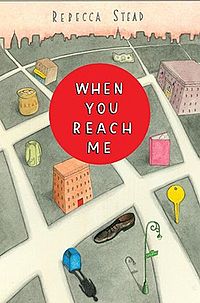
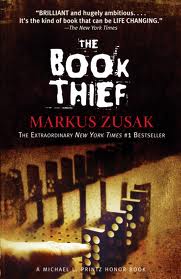
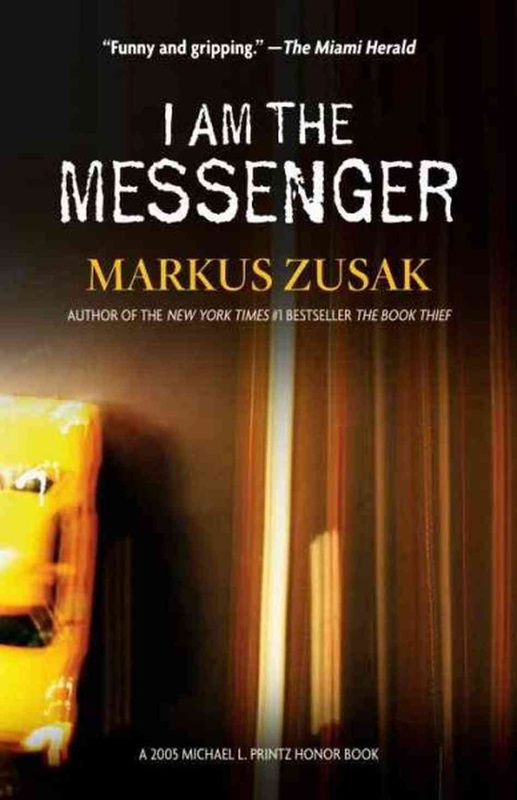
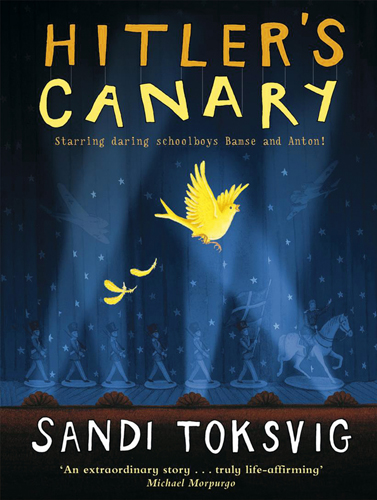
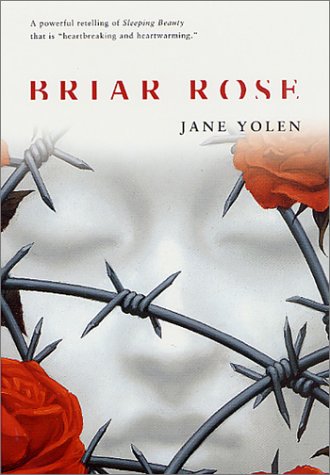
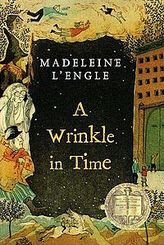
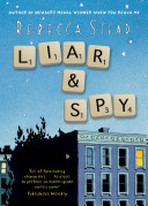
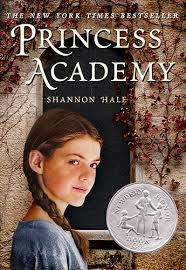
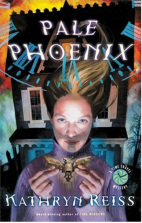
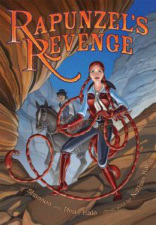
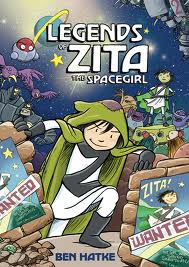
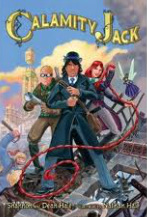
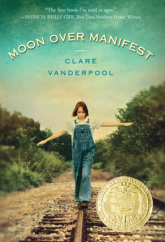
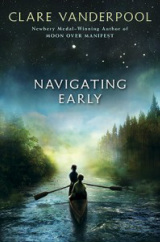
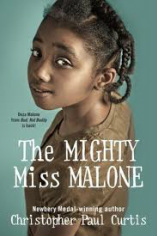
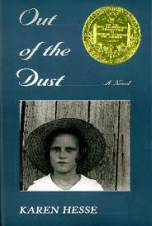
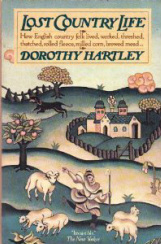
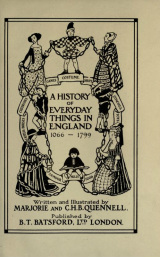
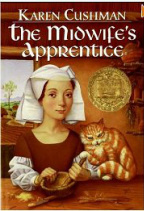
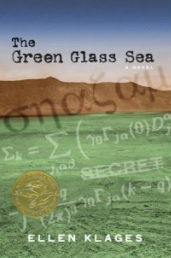
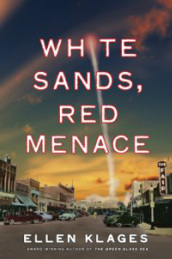
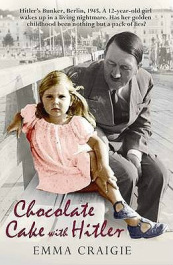
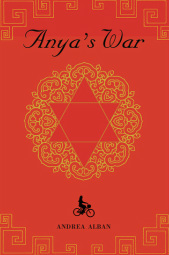
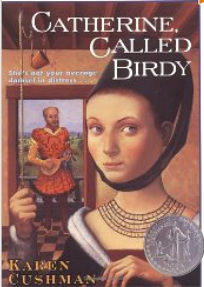
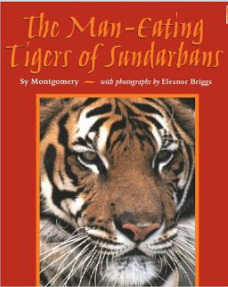
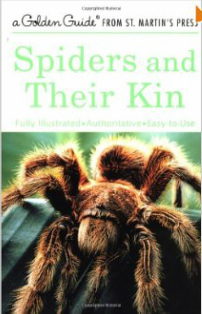
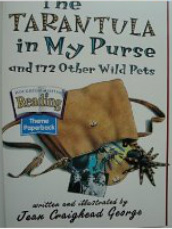
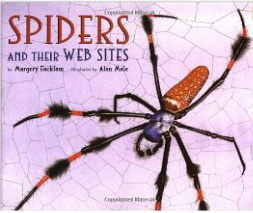
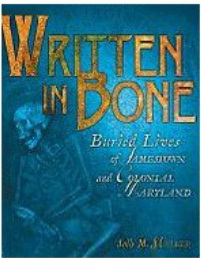
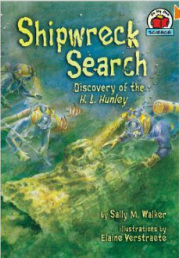
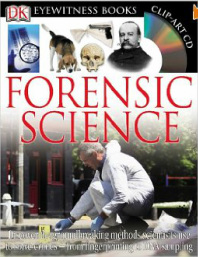
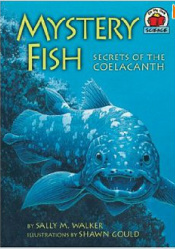
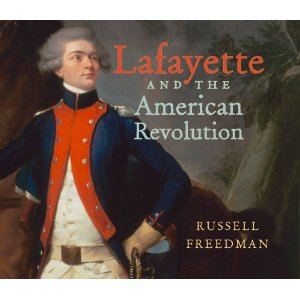
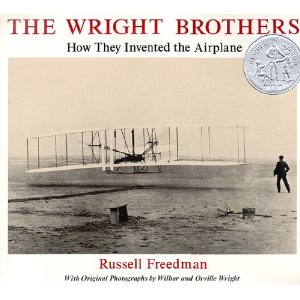
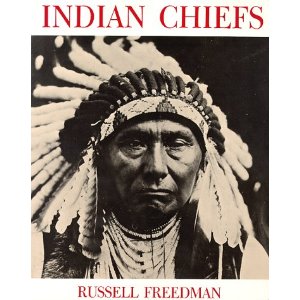
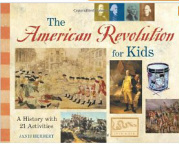
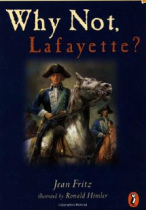
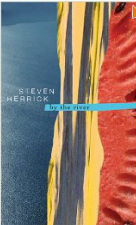
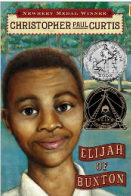
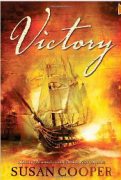
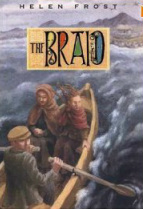
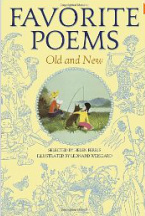
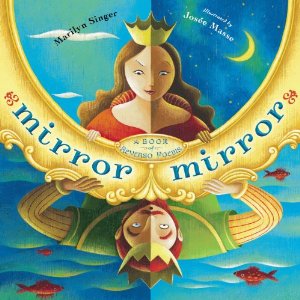
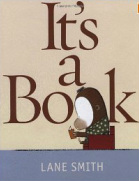
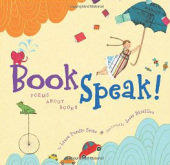
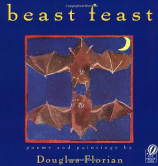
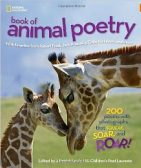
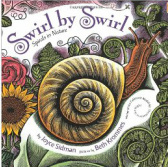
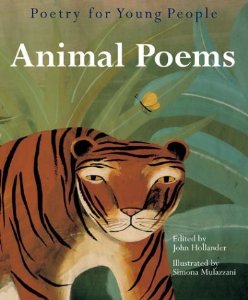
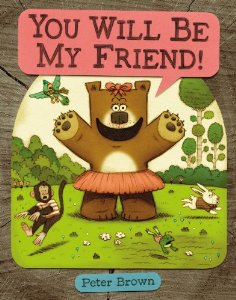

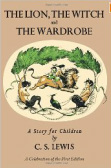
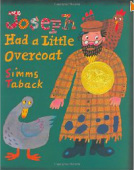
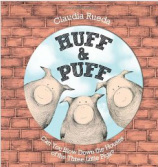
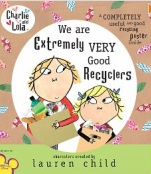
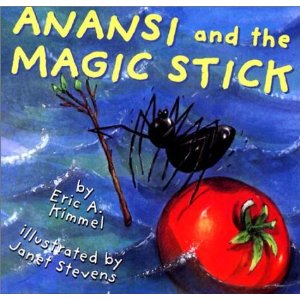
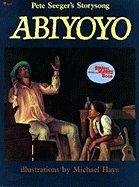
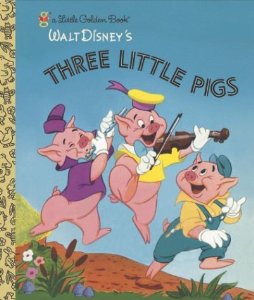
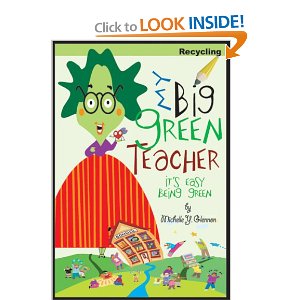
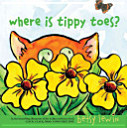
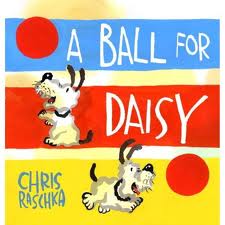
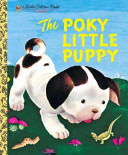
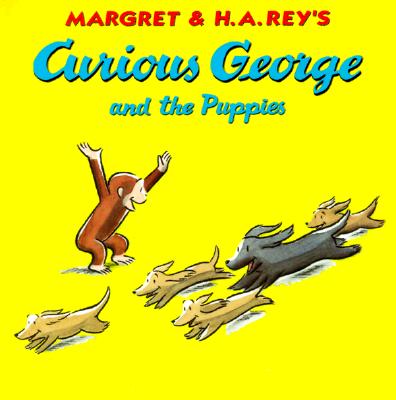

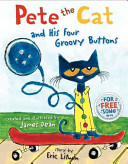
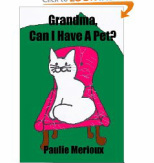
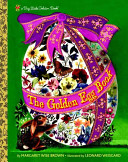
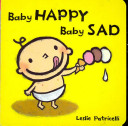
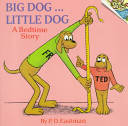
 RSS Feed
RSS Feed